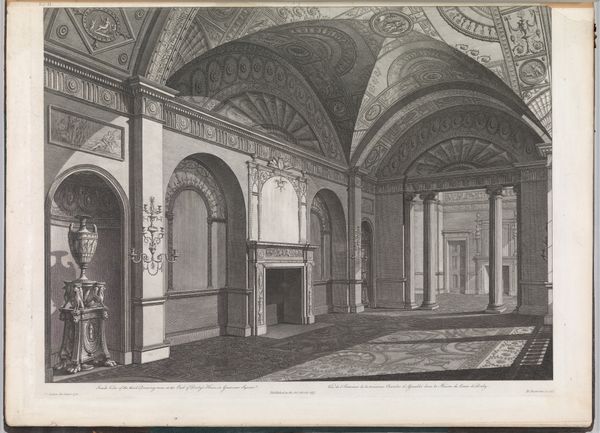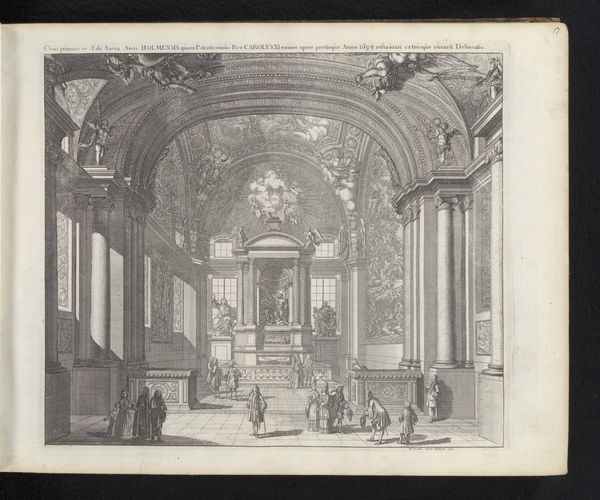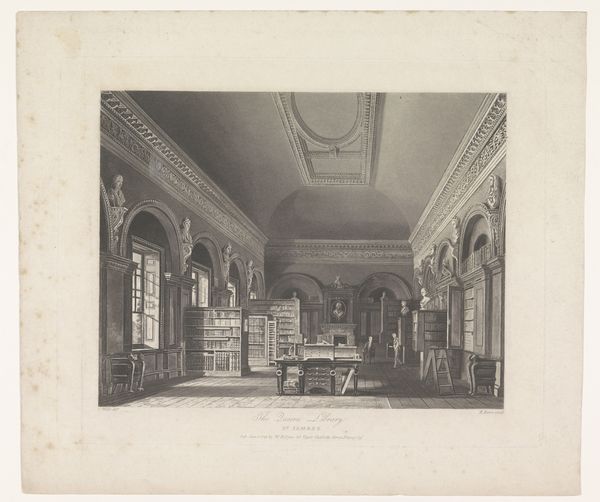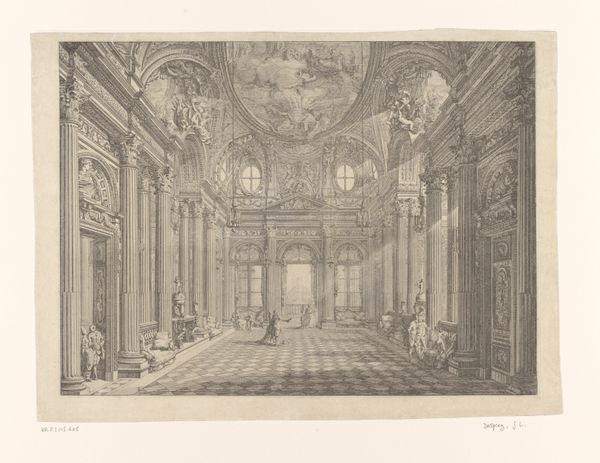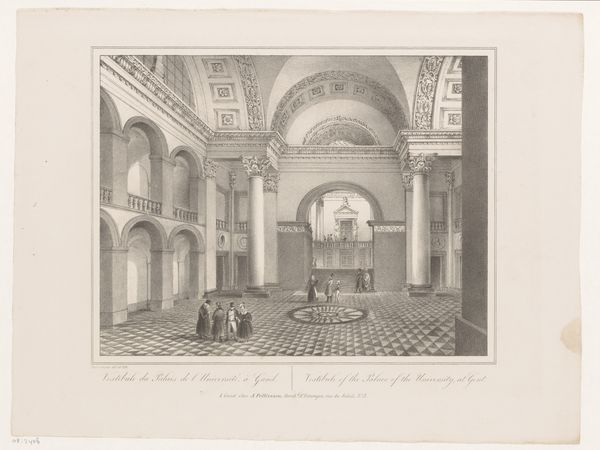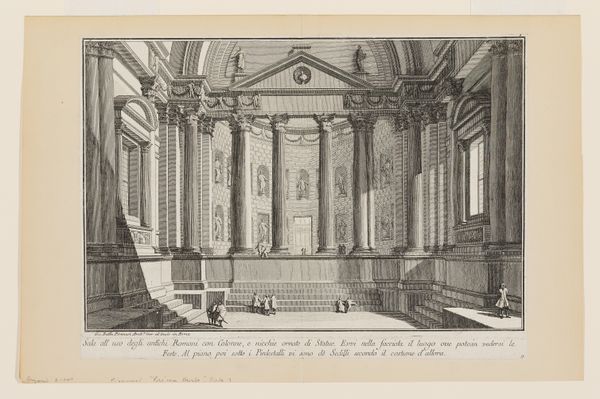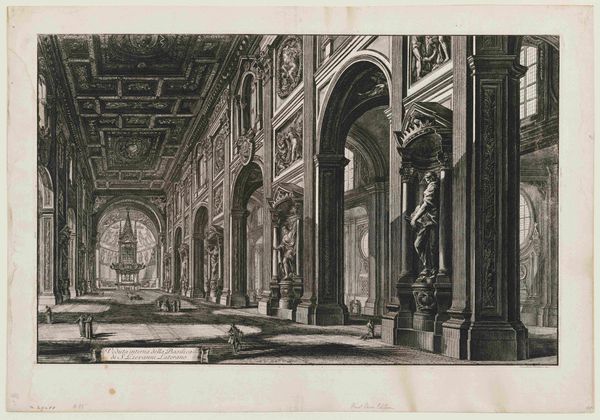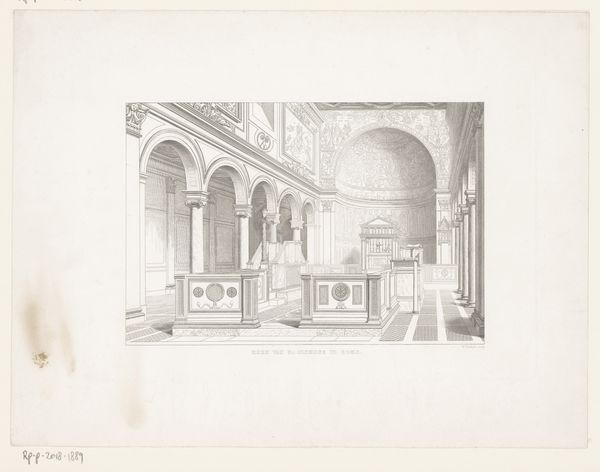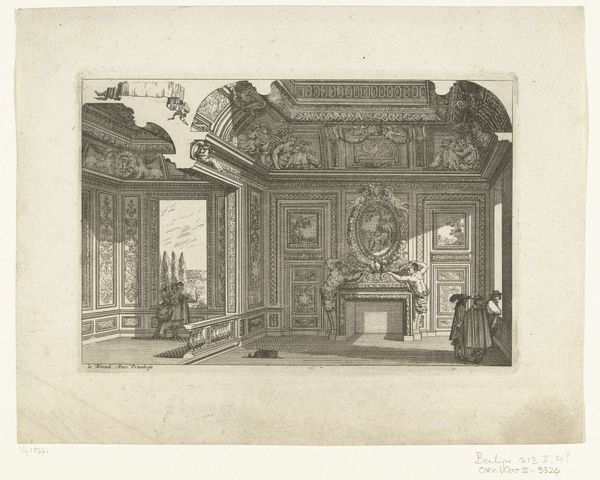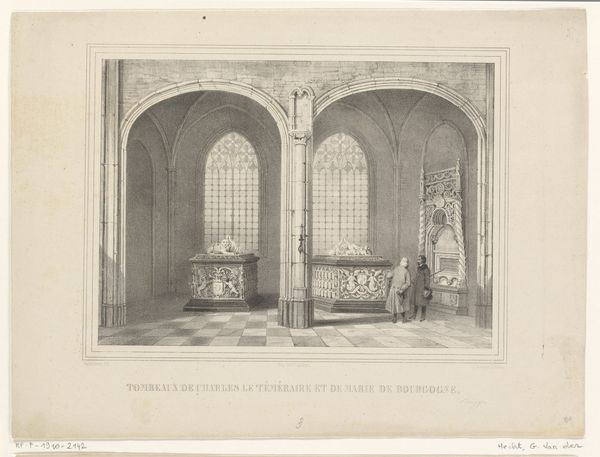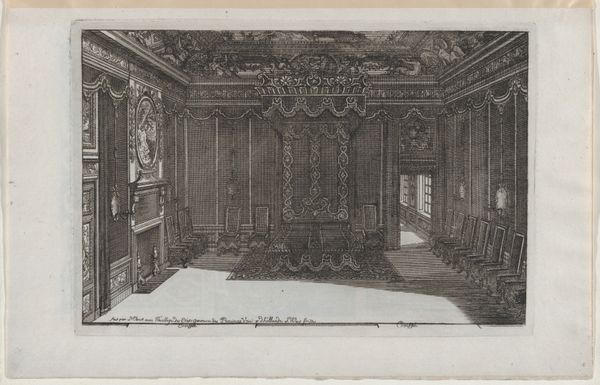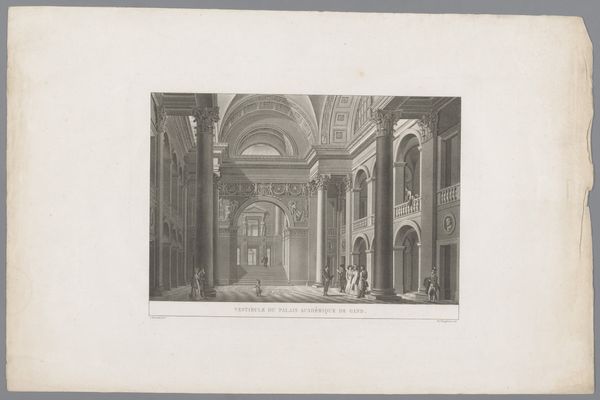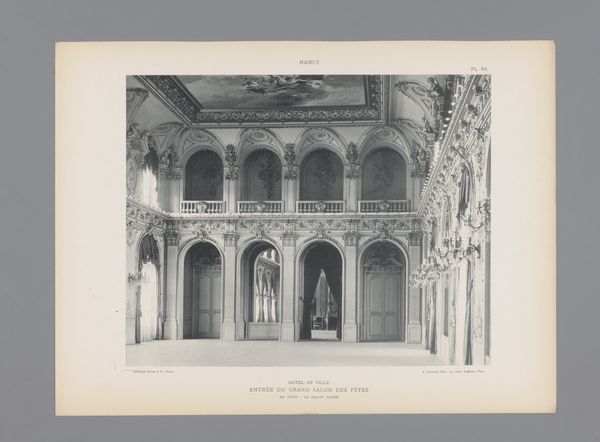
drawing, print, ink, engraving
#
portrait
#
drawing
#
neoclacissism
# print
#
form
#
historical photography
#
ink
#
19th century
#
line
#
cityscape
#
genre-painting
#
history-painting
#
engraving
#
realism
Dimensions: height 298 mm, width 433 mm
Copyright: Rijks Museum: Open Domain
Curator: This captivating print is titled "Interior of a Library," believed to have been created between 1839 and 1848 by Eugène-Napoléon Varin. Its neat lines meticulously describe a temple to learning. Editor: The mood is incredibly still and solemn, wouldn't you agree? Almost hushed, as though the artist captured the very spirit of contemplation. The architectonic setting feels quite cold, somehow. Curator: Varin was clearly fascinated by the Neoclassical revival sweeping across Europe at the time. Observe how the grandeur of antiquity is employed, the tall, fluted columns and pedimented doorways give off a rather conservative and academic aura. The setting mirrors the elite identity of such institutions at that time. Editor: And how that grandeur contrasts with the almost miniature human figures, doesn’t it? They’re dwarfed by the space and seem almost secondary to the books and architecture. Knowledge is enshrined in those neo-classical elements. Note, also, that we're dealing with an ink engraving, not an actual scene from life. Those repetitive lines create a remarkable effect—each individual book almost reads as a hieroglyph to wisdom, set amongst others, but distinct. Curator: Exactly, engraving was still seen as a prestigious, painstaking process for representing subjects both truthfully and tastefully. A print like this was aimed towards educated audiences. Reproducing interior views of libraries, for instance, helped construct libraries themselves as bastions of high culture. Editor: See how the architecture—columns, busts, reliefs—frames everything? They’re potent symbols. The busts of prominent figures and scholars are stand-ins for an ancestral claim of authority. It's all very intentional. It is an architecture steeped in centuries of learned men who wrote, stored and read within these walls. Curator: Absolutely, prints of interiors served as visual currency—spreading architectural styles, shaping public taste, and legitimizing institutions through their aesthetic associations. In a world rapidly industrializing, images like these reinforced an elite order of knowledge. Editor: Seeing it this way, it feels less like a calm library scene and more like a power play in ink. I came into it thinking: hush, contemplation! I see now that it is: who, authority! Curator: I concur. Thinking of the complex context beyond just "an interior view", brings even greater resonance to an image that would otherwise simply stand on its architectural accuracy.
Comments
No comments
Be the first to comment and join the conversation on the ultimate creative platform.
